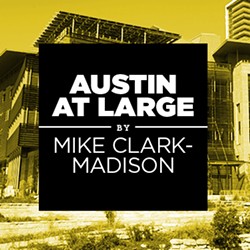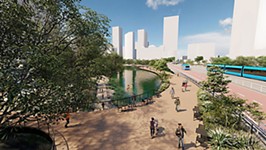Austin At Large: Fractured Fairy Tales
Will no Prince Charming come to save our school district in distress?
By Mike Clark-Madison, Fri., Jan. 11, 2019

Wake up, sleepyheads! We have been dozing and dreaming in a land of make-believe for way too long, rather than face up to what we, Austinites, must do to save our own schools. Yes, the world is dark and spooky. Yes, we tend to lose ourselves in fear or fantasy when thinking about our precious children. But c'mon, already.
Elsewhere in this issue, you'll see members and watchers of the Legislature ready to take new Speaker Dennis Bonnen at his word that the time is now for school finance reform, which may help Austin ISD and probably can't make its fiscal woes worse. You'll also see the district itself grapple with the reality that, in the words of its Budget Stabilization Task Force, "only the most politically charged options to address the structural [budget] deficit remain."
That means, of course, closing schools, cutting popular stuff like magnet programs, redrawing attendance zones, and other things that have in the recent past provoked unrest in Austin's streets. And likely will again this time around, as the AISD Board of Trustees, which has until June to close a $30-million-and-growing fiscal wound, prepares for intense political pressure to stay the course and wait for the Lege to ride in on its white horse, saddlebags filled with gold.
But AISD is facing not just a structural deficit, but a structural weakness in its very bones of which its growing penury is but a symptom. Our district was built for a different city than it now serves. Austin is getting richer, and thus more expensive. Families within the district are getting smaller, wealthier, and whiter, and new housing in the urban core is being designed to match. Poorer children of color are drifting toward the suburbs, or into cheaper outlying districts, or taking a chance with charters. Enrollment is declining and will continue to, though maybe not as fast. And education itself, as a practice and vocation, looks different than it did when most of AISD's schools were built. Those aren't failings of the district or of Austin; they're simply realities that AISD and its families have to respond to, instead of wasting more years and fears in dreamy deflection.
Give More Power To The People!
The district is shouting "Wake up!" while at the same time pleading "Don't hurt us!" But who is running "the district," really? Both board President Geronimo Rodriguez and Superintendent Paul Cruz – great and capable men with a lot in common – landed in their jobs at least partly by chance, and both need to take advantage of the opportunity AISD offers to lead, and be followed, now. Of late, the tightest hold on the reins of AISD power has been in the (also capable) hands of CFO Nicole Conley Johnson, upon whom great urgency has thrust great influence. But if you want, as Rodriguez does, to not just view AISD's challenges through the lens of scarcity, someone other than her will have to voice that vision.
That someone could be on the school board, which reflects and responds to certain sources of pressure – the teachers' union, the PTA moms, the usual – but frankly does not channel the breadth and depth of the energies of thousands of vocal activists and engaged citizens, from throughout Austin's socioeconomic spectrum, who have really put their back into fighting for the kids. Why aren't those people better organized to actually guide and power the district forward, instead of haranguing it from outside the walls? Why aren't they running for school board? (Both Rodriguez and Yasmin Wagner ran unopposed in November, not the first time that's happened.) Do we need to pay the school board members? How 'bout we get on that?
Choosing Our Own Adventure
There's more than enough willpower and brainpower in Austin to tackle the identity crisis at the heart of AISD's fiscal crisis. The Facilities Master Plan process that burst into flames under now-expelled Superintendent Meria Carstarphen had lots of flaws and left lots of scars, but it identified a ground truth that hasn't gone away: AISD has a 25%-or-so mismatch of kids and seats. To fix it you either need to move schools west (which means building new ones) or move kids east (which means renovating old schools). Neither is cheap.
All of our deeply held and thoroughly legitimate values about education – the value of neighborhood schools, the need for more attention and justice for students in deprived areas, the promise of technology in transforming teaching, and so much else – can still be held, and can be held more strongly, while we decide how to line up our kids and our schools. But we still have to do it. If we persist in magical thinking about how to avoid changes and costs while pursuing our dreams, we'll not live happily ever after. But if we suit up and saddle up for a quest to find AISD's future, we can turn our miserable realities into a great and worthy adventure.
Got something to say on the subject? Send a letter to the editor.










